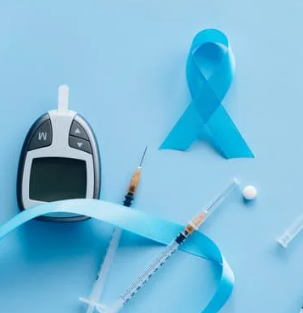Community Health Centers face new opportunities and challenges with data collection and reporting, particularly as the Affordable Care Act presents more comprehensive requirements that affect the centers. Andrew Principe has his finger firmly on the pulse of CHCs adoption of health IT. With more than a decade of experience in the health IT field, Principe is President of Starling Advisors, a consulting firm that focuses on strengthening CHCs and other safety net providers under the ACA.
Previous to his current roles, Principe served as Vice President of Health Care Solutions at Arcadia Solutions, where was an architect behind the Azara DRVS quality measurement and improvement platform.
The Azara Community recently caught up with Principe to hear his insights on how CHCs in Massachusetts and nationally are adapting to new, more stringent requirements for data collection that can improve quality outcomes and meet the demands of new insurance products.
A few years ago, many health centers in Massachusetts began to see the need for enhanced data measurement capacity, especially around health care quality outcomes. Can you talk about what was happening at the time to drive the increased need?
Massachusetts was in the process on introducing new insurance products for the uninsured, and those insurance products brought significant reporting requirements, particularly around health care quality outcomes. With most of the health centers in Massachusetts having electronic health records (EHRs) they still felt they had a lot of manual work necessary to produce those reports, but even more important than the amount of effort that it took was the fact that because they were doing that relatively manually there wasn’t great consistency. There was an inability to do peer benchmarking between the individual health centers or use the data in any improvement processes. Most of the effort was expended on simply producing the reports and not using them as effectively as they could have been.
So, what we saw was that by directly integrating the EHR data we could meet the regulatory requirements of producing the reports, and free up the time and resources at the health centers to actually focus on the quality improvement activities that was going to allow them to demonstrate improvement which ultimately would be tied in some way to the payments they received.
Since then, the need for health centers to better manage data has continued to grow?
Yes, as the Affordable Car Act (ACA) is rolling out through all of the various mechanisms, the trend is gaining significant steam nationally. As every state is required to develop programs to insure the uninsured, we’re seeing more and more of these contracts with the provider organizations that really require them to measure, to improve and to demonstrate that they have the capability of addressing really important health care issues with measureable outcomes.
What challenges do community health centers currently face with their data?
What we’re finding nationally is very similar to what we saw in Massachusetts six years ago. There have been pretty significant investments made by these organizations – whether it’s through grants or their own budgets – to implement health IT, specifically electronic health record. But now they are being asked to essentially provide meaningful information out of those systems, and it’s a very significant undertaking if they don’t have some sort of data management tool or solution to help them do that.
What parts of the ACA are going to affect how the health centers collect and report their data?
The biggest thing that is going to impact health centers is the transition of their uninsured population into insurance products. Historically, these health centers got supplemental funding to cover the uncompensated care that they provided to the people that didn’t have insurance. These patients will now be incented to select private insurance products on each state’s respective Health Insurance Marketplace. With those insurance products comes a need to better measure and report outcomes.
Is there a good example of this?
Sure. All health centers have to produce a UDS report which has a series of clinical measures, but it’s pretty basic stuff and it’s at a high level, meaning you might have to report a couple of things for people with diabetes, but it’s a single report for your entire diabetic population. Now these health plans could dramatically increase the number of different cuts and slices and analyses that these health centers need to perform.
If health centers try to do this with just their EHR system it’s a 10-hour exercise to produce a basic measure. If you have to produce that measure for populations of patients that enrolled in five different products that have slightly different reporting criteria and you want to see that information monthly instead of annually, you can see how that creates an unsustainable situation for the health center as those measures and metrics grow.
The real challenge isn’t even just meeting the reporting requirements, but actually doing something about the data, particularly if the data doesn’t show that you’re performing where you need to be performing.
It seems health centers must now have the ability to get very specific about how they’re performing in a lot of different areas.
Right. In any of these contracts that we’re seeing these health centers be presented with, they need to demonstrate that they are meeting certain standards of care around key issues, like chronic diseases or very specific episodes of care. Even today, a lot of that compensation doesn’t vary based on the results of those reports, so it was a simple exercise to meet the requirements, complete the reports, send them to whoever you need to send them to and check the box that you were complete.
What’s dramatically changing in the payment is that if they’re not performing above certain levels the centers are either going to be excluded from the health plan option altogether, meaning that the health plan patients can’t go there, or they face decreased reimbursement for the same patients because they can’t prove they’re meeting those thresholds of performance.
When you compound that with the fact that the patients who typically seek their care in a community health center often carry with them a variety of risk factors that make it even harder to achieve those goals, we often find that health centers, in the reports they produce may be perceived as underperforming some of their non-health center primary care competitors or peers even though there are a variety of different factors at work in making that happen. Part of what Health Centers need to do is more accurately define the risk – both disease-related and social acuity-related, of the population they serve so that they are properly credited with the work they do to manage these populations.
So, centers are feeling the need to take a much more comprehensive approach to how they interact with their data?
We’re seeing a trend nationally where these health centers are trying to figure out not only what can they do to produce this information, but also to implement programs that are going to allow them to drive meaningful improvement. We think the foundation of meaningful improvement is ongoing measurement. You can’t just measure things once a year and hope they come out they way that you want them to.
A lot of the organizations that do this effectively are implementing changes in their care processes and are tying those with a performance evaluation or measurement strategy that can be done week over week and in some cases day over day so they can study what’s happening as they are changing the way in which they provide care for these patients.
I mentioned earlier the scenario of it taking 10 hours to produce a single report – you can’t do that if your goal is to measure something every single week and then study the root causes of poor performance. For example, identifying the patients that aren’t up to date with their immunization schedules so that something can be done about it rather than simply giving a single numerator and denominator that says “here’s the number of patients we saw” and “here’s the number that had their immunizations,” we actually need to be able to identify which ones are out of compliance so that the care team within the health center can do something about it.
That’s really where systems like DRVS come in to play in helping to arm the care team with actionable information about the population that helps steer any of the measures that they’re going to be held accountable to in the right direction so they ultimately achieve those thresholds of performance.
And the Azara DRVS platform can provide the real-time data as it’s needed, whether it it’s monthly, weekly or daily, correct?
Yes, and it’s really helpful that these health centers actually have a strategy for how to disseminate the information that’s within the contracts. For example, if the contract says you receive a bonus payment if 92 percent of your pediatric patients are fully immunized, that’s a really important organizational goal. But now you’ve got to make sure that all of your disparate providers that might be spread across multiple locations all have a sense of that information and that performance. If it’s the rollup or the aggregate of the organization that matters, it becomes important that you find the outliers pretty quickly.
Being able to do it in a much more real-time manner allows you to evaluate the interventions you’re applying to try to solve the problem, whereas doing it monthly or annually is really only good for meeting the actual reporting requirement itself and not for actually making those improvements.
There are certainly a lot of changes coming for health centers, particularly in terms of how they handle data. How do you think centers will continues to fit into the overall health care delivery picture?
I have always felt, and continue to feel, that our nation’s Health Centers are extremely well positioned to be a major part of the solution to the problems Health Reform addresses. Health Centers are located in the communities that we frankly need to reach in order to have a meaningful impact on the overall health of the nation, and they have the right mission, focus, people, and tools to make this happen. I believe that health centers are going to be a significant part of the solution, and I think with the adoption of a couple of best practices around data management, around quality improvement and around contracting with insurance companies, that they represent our best ally in a healthier future. No other group of healthcare providers, in my opinion, is better positioned to address these challenges head-on.
Related Articles

Value-Based Care Foundations Part 2: A New Chapter in Risk Adjustment
Explore Insights
Socioeconomic Status, Access, and Control: Rethinking Diabetes Outcomes
Explore Insights
